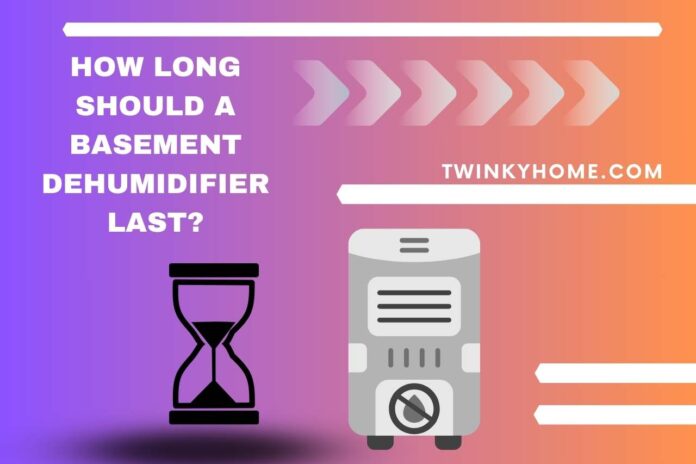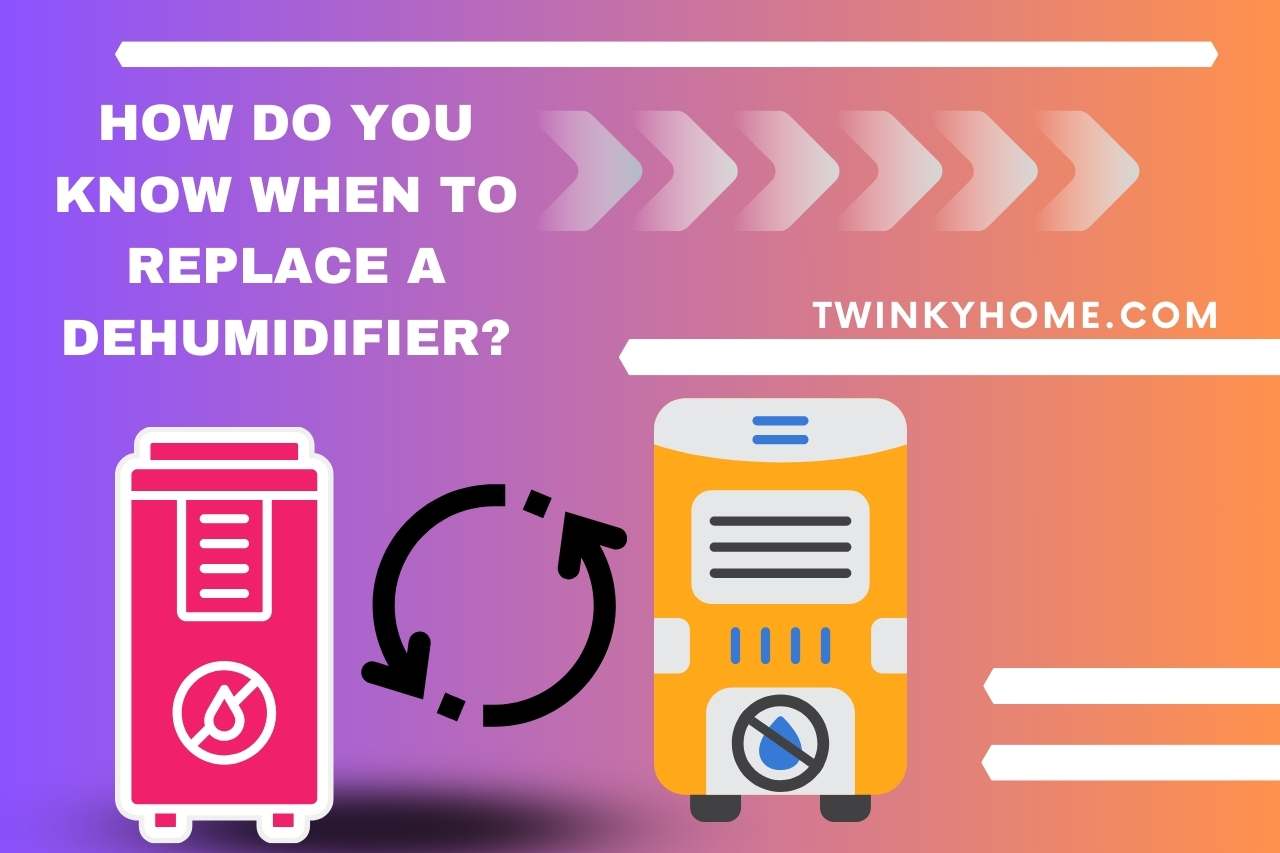“How long should a basement dehumidifier last?” – Discovering the optimal lifespan of a basement dehumidifier is crucial for both homeowners and business owners seeking effective moisture control. Actually, when the dehumidifier ages, it is unable to keep indoors moisture-free, so it is worth knowing the average life expectancy of dehumidifiers. In this guide, we will be discussing the factors influencing the longevity of these essential devices. From quality considerations and usage patterns to maintenance practices, we’ll provide insights to help you understand how long your basement dehumidifier should last and how to maximize its lifespan. Whether you’re a seasoned homeowner or a first-time dehumidifier user, this exploration will empower you to make informed decisions about when to replace or upgrade your unit for optimal humidity management in your space.
How Long Should a Basement Dehumidifier Last?
In general, basement dehumidifiers should last for 8 to 10 years. Anyways, the lifespan of a basement dehumidifier is influenced by various factors.
The 8 to 10-year estimate is based on considerations such as the quality of the unit, regular maintenance, workload, and environmental conditions. Higher-quality dehumidifiers, when properly maintained and operated within their capacity, tend to last longer.
On the other hand, extreme conditions or heavy usage may shorten the lifespan.
This duration is a general guideline, and individual cases may vary based on specific circumstances and the brand/model of the dehumidifier.
You can check the manufacturer’s recommendations and warranty for more accurate information tailored to the particular unit you own.
These are the factors that influence the lifespan of dehumidifiers.
- Quality of the Unit: Higher-quality models often last longer due to better construction and materials.
- Usage and Workload: Constant operation and heavy workloads can shorten the lifespan. Thus, you should opt for a unit with a suitable capacity for your space.
- Maintenance: Regular cleaning of filters and coils, emptying the water tank, and overall upkeep contribute to longevity.
- Environmental Conditions: Extreme temperatures, high humidity levels, and dusty environments can impact the unit’s performance and durability.
- Brand and Model: Reputable brands and specific models may offer better longevity, as they are designed with durability in mind. And longer warranties often indicate the manufacturer’s confidence in the product’s durability.
- Power Surges: Electrical issues and power surges can affect the electronic components, so using surge protectors is advisable to extend the lifespan of your dehumidifier.
How to Increase the Lifespan of your Portable Dehumidifier?
Most of the time, basement dehumidifiers are portable, so here are some tips to increase their lifespan.
- Control Humidity Levels: Set the dehumidifier to maintain a consistent and appropriate humidity level, usually between 30-50%. Keep in mind that running it excessively can strain the unit.
- Regular Cleaning: Clean the air filter and coils at least every two weeks to prevent dust and debris buildup, ensuring efficient operation. Moreover, regularly empty the water tank to avoid overflow and potential damage. Some units have auto-shutoff features, but it’s best not to rely solely on them.
- Proper Placement: Position the dehumidifier in a central location within the room for optimal air circulation. Avoid blocking the air intake and exhaust vents. Otherwise, these parts can be overstrained.
- Ventilation: Ensure proper ventilation in the room to aid the dehumidifier’s performance. Good airflow helps distribute dry air more effectively.
- Right Size: Choose a dehumidifier with a capacity suitable for your room size. Avoid overworking the unit by using multiple smaller units if needed.
- Scheduled Maintenance: Follow the manufacturer’s maintenance schedule, as it can vary from one model to the other. This may include tasks such as coil cleaning, checking refrigerant levels, and inspecting the overall condition of the unit.
- Protect Against Power Surges: Use surge protectors to safeguard the dehumidifier from electrical issues that could damage its components.
How Do you Know When to Replace a Dehumidifier?
If you want to know when to replace your dehumidifier, check for signs of wear and tear and performance failures. Here, we have listed the most common signs so you can replace your dehumidifier at the right time.
- Age: Most dehumidifiers have a lifespan of 8 to 10 years. If your unit is approaching or surpassing this timeframe, it may be time to consider a replacement.
- Failure to Remove Moisture: If the dehumidifier is running but not effectively reducing humidity levels in the room, it indicates a problem with its moisture removal capabilities.
- Excessive Noise: Unusual or loud noises during operation can also signal mechanical issues or component failure within the dehumidifier.
- Visible Leaks: Leakage of water from the unit suggests a malfunction, potentially due to a damaged water collection bucket, hose, or internal components.
- Ice Formation: If ice forms on the coils or inside the unit, it may indicate a refrigerant issue, which restricts the dehumidifier’s ability to operate efficiently.
- Unpleasant Odors: Foul or musty smells emanating from the dehumidifier can indicate mold or bacterial growth, either within the unit or in the collected water.
- Constant Running: If the dehumidifier runs continuously without achieving the set humidity level, it may be overworked or experience a sensor malfunction, so you will have to go for a replacement.
- Electronic Display Issues: Malfunctions in the electronic controls, such as inaccurate readings or failure to respond to settings changes, suggest a problem with the unit’s internal components.
- Increased Energy Consumption: A sudden or gradual spike in energy consumption without a corresponding decrease in humidity levels may indicate inefficiency or malfunction.
If you notice one or more of these signs, it’s advisable to troubleshoot the dehumidifier, refer to the user manual, and consider professional inspection or repair. To be honest, it may be more cost-effective to replace a severely malfunctioning unit rather than attempting extensive repairs.
You May Also Like
- How to Drain a Basement Dehumidifier? Step-by-Step Guide
- How Long for Dehumidifier to Dry Basement? Unveiling the Drying Magic!
- How to Clean Basement Dehumidifier? Crystal Clear Air!
- How to Keep the Basement Dry Without a Dehumidifier? (Tips & Tricks)
- Does Dehumidifier in Basement Help Upstairs? The Ripple Effect!
- Whole House Dehumidifier vs Basement Dehumidifier – Choosing Wisely!
- How to Choose the Right Dehumidifier for the Basement? Basement Bliss!
- Why does My Basement Dehumidifier Ice Up? Decoding Dehumidifier Woes!
- Can you Run Two Dehumidifiers in the Basement? (Ins and Outs)








![OGX Biotin And Collagen Shampoo Review [Updated One] Ogx Biotin And Collagen Shampoo Review](https://twinkyhome.com/wp-content/uploads/2022/03/Are-chicken-Super-Noodles-vegetarian-1-100x70.jpg)